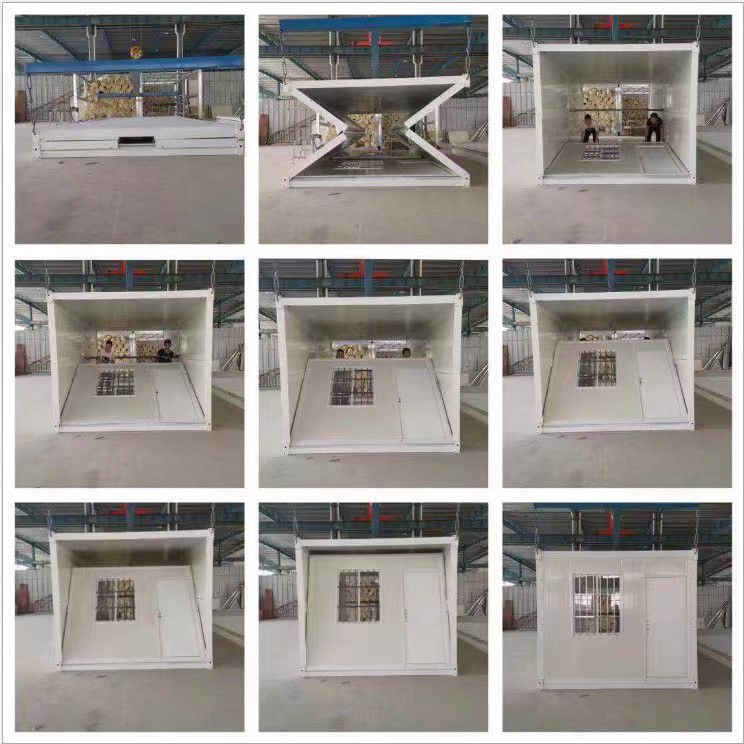If you want to know the sustainable future of living from box to home in collapsible container living, you have come to the correct place. Gone are the days of using containers only for shipping purposes but to use them for cost-effective living for middle or lower-income people worldwide. And especially in California, with around 40 million people, needs more small container homes than other states as it is the most populated state in the US. Collapsible or foldable Manufactured Homes in California are an added advantage for easy installation in four minutes. Hence, it is easy to assemble and disassemble collapsible modern prefab houses anywhere, and they are also portable homes at affordable costs. It is the reason that the global foldable or collapsible container house market is to grow at a CAGR of 9.4% from its current 2023 8.5 billion dollars value up to 2030.
Continue reading this blog to learn more about living from box to tiny container homes and the many reasons for its sustainable future to be eco-friendly and have other benefits.
How do collapsible containers change box to home?
With the living costs in cities rising rapidly, the need for affordable housing solutions has become inevitable worldwide. It is significantly more in highly populated cities like Los Angeles, San Francisco, etc., in California, which has the highest population of any state in the US. Hence, transforming shipping containers into modern modular homes revolutionized the construction industry to provide cost-effective housing solutions. But with more innovativeness, these containers can also become collapsible or foldable to be easy to assemble or disassemble within four minutes. Hence, collapsible small containers and home change boxes to homes for middle or lower-income people to live healthy and happy lives.
What is the sustainable future of collapsible container living?
With the rapid rise in collapsible container living, its sustainable future is bright to save Mother Earth from its many harms like greenhouse gases and carbon footprint. It is because of making mass collapsible tiny container homes in off-site factories to reduce not only costs but also harmful impacts. The significant reason for this is using high-quality raw materials that are eco-friendly so as not to damage the environment. Also, by using robotics and automation, there is a reduction of waste to only around 2% of those made during the building of the traditional houses. And that is only part of it, as there is reduced transportation of many materials onsite to build them, which could reduce emissions to a large extent and save the only planet left for humans to live on. Hence, making modern modular homes out of shipping containers that are also foldable for easy installation, along with assembling and disassembling easily and quickly, makes them sustainable now and for the future.
10 top reasons for the bright, sustainable future of collapsible container living
Having seen tiny container homes change box to home living and its sustainable future, it is time to know the many reasons for it. The significant reason for this is the increasing concern among people worldwide to save Mother Earth from the harmful effects caused today to affect future generations. Also, climate change is bringing much devastation worldwide, such as floods, hurricanes, earthquakes, and other natural disasters. Hence, check out the many reasons for the bright, sustainable future of collapsible container living from box to home.
- Foldable tiny container homes are available in many sizes, shapes, styles, designs, and others to not only look aesthetic but also be convenient to live in safely.
- Collapsible container homes made of eco-friendly materials make their sustainable future bright as they save Mother Earth.
- Cost-effective, foldable, prefab tiny homes made of containers are becoming popular among a large number of people living in cities.
- Enables safe living housing solutions for lower-income people to increase in popularity and usage to reduce the building of traditional brick-mortar houses to save energy
- Reduces waste accumulating because of building traditional houses as foldable modular homes built in considerable quantities in factories
- Minimizes the green gas emissions as there is no need for much transportation of materials as in traditional building houses to have less carbon footprint
- Increasing population and urbanization are raising the demand for collapsible prefab homes worldwide to reduce waste, greenhouse gas emissions, carbon footprint, and other harmful impacts.
- The fast installation of folding modular homesis helpful for emergency purposes like setting up camps and hospitals and even in remote areas to provide safety from various weather conditions.
- Being made from recycled containers, it avoids the carbon footprint caused by building traditional homes to save the planet Earth.
- Reduces burning of fossil fuels as it reduces energy consumption by using solar panels and other renewable energy sources
The above facts and reasons will help you to know that there is a bright, sustainable future of using collapsible containers to change from box to home for cost-effective living, health, and happiness.

